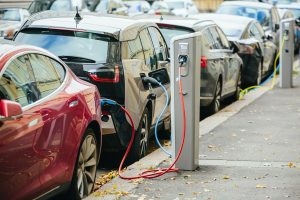This article was contributed by Stefano Mainero of FCC partner EPN Consulting.

Over the last couple of years we have heard many announcements from some car manufacturers that in the next few years or decade their cars will be equipped with electric engines only. At the same time, a few country governments have proudly stated they will not allow commercialisation of traditional fuel powered vehicles as of 2035 or 2040.
This seems to be good news if we take into account the high level of pollution in our cities, but three main concerns come to mind.
The high price of EVs have compared to equivalent gasoline/diesel models
The price tag of an EV is still too high, however in recent times new contractual solutions have been offered that include a sort of long-term rent of the vehicle including a number of recharges and/or batteries replacement after a number of years. This has made the “ownership” (not the best term in this case) of an electric car more affordable
The range covered by electric cars
The battery autonomy of an EV stated by its manufacturer is still very different from what experienced by users. This is due to many reasons: driving style; number of passengers carried (transporting more passengers means more weight to move, thus more energy consumed); routes driven (going up to the mountains requires more energy than driving on flat land); time of driving (driving in winter with all devices switched on requires more energy than driving in sunny days – with not too hot weather though), etc. Besides, some users complain that navigators installed in some EVs are not precise about guiding the driver to the closest charging station and this may generate serious problems)
The irregular service of charging stations available
The density of charging stations may be higher in urban environment but it is scarce in suburbs/national roads. Besides that, density varies a lot from country to country which would make an international journey planning more difficult to implement. Furthermore, charging stations have different plugs according to the power provided and stations may or may not accept the subscription EV users have with their electricity service provider. Finally, the recharging time varies a lot ranging from a few minutes to 30 minutes or more while on the go and this could represent a hindrance to choose an EV.

Source: ACEA Making the Transition to Zero-Emission Mobility study
One smart solution, already available in China, is a battery swap service that in a few minutes swaps the EV’s flat batteries with fully charged ones. Unfortunately, this service is not common in Europe.
Energy consumption
On top of what so far discussed, there are big questions on energy: How could we have so much energy available to charge EVs – whose number is expected to increase rapidly in the next decade? Where and how will this energy be produced?
To have a better picture, some experts advise on focusing on both: energy production AND storage. The latter would be a good solution for having energy immediately available also in areas where infrastructures of electricity provision is not easily available (e.g. along roads surrounded by fields or forests).
Going back to the title of this article: EV may be the future of mobility in an urban environment, but we are currently too far away from it (of course, different analyses apply to motorway networks).
For more info on charging stations density, please read the Special Report on “Infrastructure for charging electric vehicles: more charging stations but uneven deployment makes travel across the EU complicated” published in 2021 by the European Court of Auditors.





